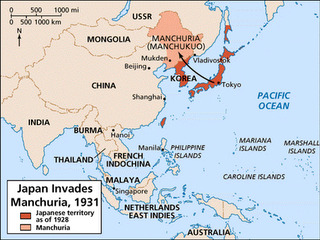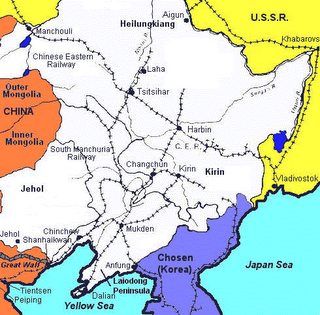Reasons for Japan's Withdawl From the League of Nations and the Wasington Treaty: By Vasko
Reasons for Japan's Withdawl From the League of Nations and the Wasington Treaty: By Vasko
The League of Nations
•The League of Nations was formed after WWI at a Paris Peace Conference in January 18th 1919. The conference was organised by the victors of WWI to negotiate the peace treaties between the Allied and Associated Powers and the defeated Central Powers.
Why was the League of Nations was formed?
•The League of Nations was formed so countries could settle disputes between one another without resorting to war. At times it worked, for example in the dispute between Albania and Yugoslavia, but other times the League of Nations failed.
•Japan was one of the original members of the league on nations that joined on January 10th 1920. Other main powers that joined that day were Italy, France and the United Kingdom.
The Racial Equality Clause
•In 1919 at the Paris Peace Conference Japan had suffered from unequal treaties, to be looked at as an equal towards the western powers was Japan’s dream. Japan had put a racial equality proposal foreword at the Paris peace conference. It suggested that all races get treated with the same respect. The proposal received a majority vote on April 28, 1919. There were 17 votes over all and 11 of them were for the proposal.
•Even though a majority voted yes the proposal was rejected by the L of N chairman (US President Woodrow Wilson). He argued that the proposal was so significant that it would require a unanimous vote (everyone voting YES) to be passed. The US were not strongly opposed but the British and Australians were. It was just that the US received the blame as it was their President who as chairman overturned the proposal.
The Washington Treaty
•The treaty was also known as as the five power treaty. It had limited the navy of Japan, United States, France, British Empire and Italy. They all had singed the treaty at the Washington Naval Conference which was held in Washington DC form November 1921 to February 1922.
Why Was the Washington Treaty Negotiated?
The Washington treaty was negotiated to reduce the risk of war. It was intended that countries war machinery would be limited so that they could maintain what territory they already controlled but would have the power to expand. As a countries navy was the main way they could be aggressive the treaty focussed mainly on naval capabilities.
Terms of the Washington Treaty
The tons of a ship a country had would be limited, for example a single ship could not exceed 35,000 tons excluding fuel. They could not carry guns on the ship over 16 inches (406mm), the treaty also specifically addressed aircraft carries the only 2 aircraft carries could go over the 27,000 ton limit all other aircraft carries made must be under 27,000 but could not be over 33,000 tons and the number of guns being able to be carried on an air craft carrier was cut down.
•No new fortifications and naval bases were aloud to be built. The naval bases that existed were not allowed to be upgraded unless it was on the main coast line but not on the smaller islands. If one of the nations wanted to improve there naval base the would have to talk to the other nations that are apart of the treaty.
The Lead-Up to Japan's Fallout with the West
Japan believed that it needed land on which to settle its expanding population, resources to supply its industry and security from Russia in the north. It fully believed that China could not provide the security it needed. Manchuria fulfilled all its needs. It provided land, resources and a buffer between Japan and Russia.
Japan controlled parts of the Manchuria Railway Network. In September 1931 Japan claimed that the Chinese destroyed the railway, and attacked their army. By February 1932 the Japanese army had controlled Manchuria killing thousands of innocent people. China was defenseless and turned to the league of nations for help. A year later there was a special assembly held, 41 nations had voted that the Japanese should withdraw from Manchuria. 40 nations voted that Japan should withdraw form Manchuria and 1 vote that they should stay that one vote was from Japan itself. (they believed the ‘real story’)
In the past Japan has had a lot of unfair treaties such as Treaty of Kanagawa, when the Americans forced open Japan’s door. Harris treaty also with the united states. Washington treaty. The boycott during the world wide depression, Japan had found a way to get by, by selling cheap good but the western countries saw what was happening and banned the goods from being able to be sold and Japan was left with all these goods. Japan believed it was time to stand its ground and stake its claim in China.
Debate Over the Idea of Withdrawal
If Japan listened to the league and pulled out of Manchuria it would have cost them:
•All the resources they had gained.
•Many politician’s would have been fired.
•They would have lost important land (Manchuria).
•The western powers would think they can control Japan and they actions it takes.
•There naval fleet would still be cut down.
•There pride would be gone.
If Japan stayed in Manchuria it would mean:
•They would have more recourses
•The western powers would have to see them as an equal, they are to strong to ignore.
•Bigger naval fleet (they would have the resources to do it).
•The Japanese people can keep there pride.
Japan Makes its Choice
•Japan refused to withdraw from Manchuria and instead, on March 27th 1933 it gave notice of its withdrawal from the league of nations.
•Because they withdrew form the league of nations they also had to withdraw from the Washington treaty. On 29 December 1934, the Japanese government gave formal notice that it intended to terminate its involvement in the Washington Treaty.
Conclusion
Japan had all the resources in Manchuria and they could build a Navy fleet and nothing would be holding them back. NOW YOU DECIDE IF WHAT JAPAN DID WAS RIGHT!!!

